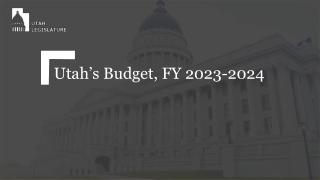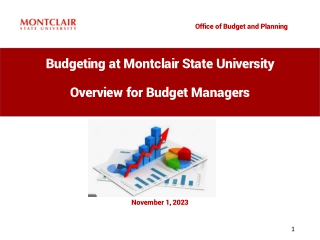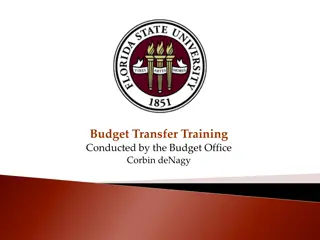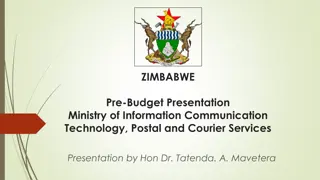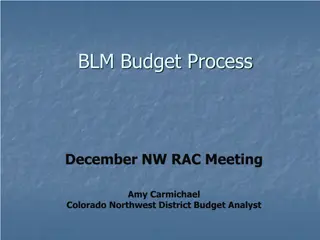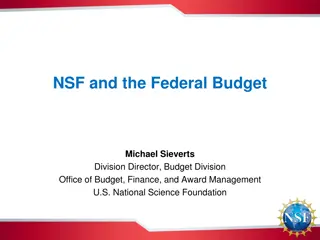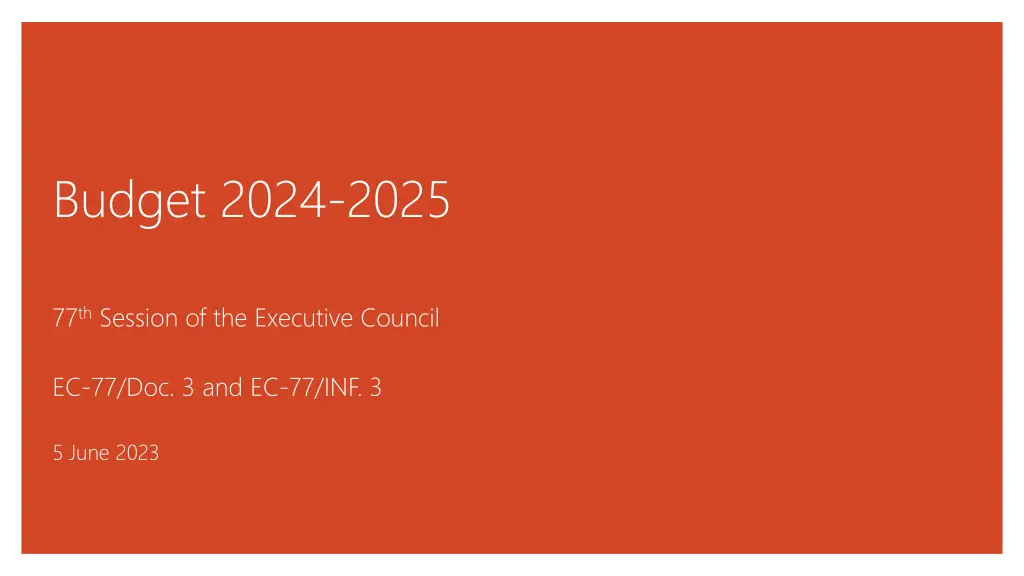
Executive Council Budget 2024-2025 Highlights
Explore the key details of the Executive Council's budget for the 2024-2025 period, including the approved maximum expenditures, priority areas, estimated costs, and proposed appropriations. Understand the reasons behind the budget allocation differences and the focus on core activities.
Uploaded on | 0 Views
Download Presentation

Please find below an Image/Link to download the presentation.
The content on the website is provided AS IS for your information and personal use only. It may not be sold, licensed, or shared on other websites without obtaining consent from the author. If you encounter any issues during the download, it is possible that the publisher has removed the file from their server.
You are allowed to download the files provided on this website for personal or commercial use, subject to the condition that they are used lawfully. All files are the property of their respective owners.
The content on the website is provided AS IS for your information and personal use only. It may not be sold, licensed, or shared on other websites without obtaining consent from the author.
E N D
Presentation Transcript
Budget 2024-2025 77thSession of the Executive Council EC-77/Doc. 3 and EC-77/INF. 3 5 June 2023
Basis for Budget 2024-2025 Approved Strategic Plan 2024-2027 (Resolution 3.1(1)/1 (Cg-19)) Operating Plan 2024-2027 (Cg-19/INF 3.1(1a)) Approved Maximum Expenditures for 19th Financial Period 2024-2027 (Resolution 3.1(2)/1 (Cg-19)) Supporting details from the approved Maximum Expenditures related to: Planned staff costs and Specific planned expenditure by output for each biennia and per year of the 2024-2025 biennium 2
Overall Proposed Budget 2024-2025 Amount Approved Maximum Expenditures 2024-2027 278 071 400 Proposed Budget 2024-2025 139 325 200 Percentage of Approved Maximum Expenditures 50.1% Reasons for budget 2024-2025 different from 50% of approved Maximum Expenditure 2024-2027: (-): Inflation impact higher in 2026-2027 biennium (+): Energy costs expected higher in 2024-2025 biennium (+): ERP Implementation expenditure planned for 80% in first biennium (+): G3W position and activity funding approved only for first biennium 3
Priority Areas in Budget 2024-2025 Core Activities EW4All Global Greenhouse Gas Watch (G3W) Plan of Action for Hydrology Cryosphere and Downstream Impacts ERP Implementation IT Strategy Green Expenditure generally consistent across two biennia of 19th Financial Period Brown Expenditure primarily planned for the first biennia (2024-2025) of the 19th Financial Period 4
Estimated Cost of Priority Areas in 2024-2025 Budget (in thousands of CHF) Maximum Expenditure 2024 2027 Budget 2024 2025 Percent of Total Priority Area Baseline level 267,124.0 133,056.8 49.8% Early Warning for All (EW4All) 5,962.3 2,976.9 49.9% ERP Implementation 1,750.0 1,400.0 80.0% IT Strategy 1,437.9 719.0 50.0% Global Greenhouse Gas Watch (G3W) 601.4 601.4 100.0% Plan of Action for Hydrology 865.8 430.7 49.8% Cryosphere and Downstream Impacts 330.0 140.4 42.5% Total budget for the 2024 2025 biennium: 278,071.4 139,325.2 50.1% 5
Proposed Budget 2024-2027 by Appropriation Part Budget 2024 2025 28 591 800 Appropriation Parts Percentage Part I. Long-Term Goal 1 Better Serve Societal Needs 20.5% Part II. Long-Term Goal 2 Enhance Earth system observations and predictions 26 696 500 19.1% Part III. Long-Term Goal 3 Advance targeted research 12 633 100 9.1% Part IV. Long-Term Goal 4 Close the capacity gap 30 613 600 22.0% Part V. Long-Term Goal 5 Strategic realignment of WMO structure and programmes 2 385 000 1.7% Part VI. Policymaking Organs, Executive Management and Oversight 21 411 700 15.4% Part VII. Language and Conference Services 16 993 500 12.2% Total budget for the 2024 2025 biennium: 139 325 200 100.0% 6
Apportioned Costs in Budget 2024-2025 (in thousands of CHF) Max Expenditure 2024-2027 21 718.2 Apportioned Cost Category Budget 2024-2025 Percent of Total Legal and Administrative costs 10 813.2 49.8% IT Operating and management costs 16 172.7 8 657.2 53.5% Building Operations and management costs 11 049.2 5 611.4 50.8% Repayment of building loan 5 909.2 2 954.6 50.0% Total 54 849.3 28 036.4 Percentage 19.7% 20.1% Notes: IT Operating and management costs higher due to implementation of ERP system primarily in first biennium Building Operations and management costs higher due to higher energy costs forecast in 2024-2025 7
Planned Objects of Expenditure (in thousands of CHF) Max Expenditure 2024-2027 Object of Expenditure Budget 2024-2025 Staff costs 72.7% 72.4% Short-term staff and Consultancy services 4.9% 5.0% Travel Experts 5.9% 5.8% Travel Staff 1.6% 1.6% Fellowships and training activities 1.1% 1.1% Grants and financial contributions 1.9% 1.9% Contractual services and Operating expenses 9.8% 10.1% Repayment of building loan 2.1% 2.1% Total: 100.0% 100.0% Note: Variations due to planned use of funds (consultancy and contractual services) for ERP implementation in 2024-2025 biennium and inflationary impacts 8
Other Areas of focus during the 2024-2025 biennium Efficiencies and Economies Extrabudgetary Contributions In accordance with Resolution 3.1(2) (Cg-19), the Secretariat will, during the 2024-2025 biennium: As requested in Resolution 3.1(2) (Cg-19), the Secretariat will, in collaboration with Members: continue to continuously review the methods of implementation and to identify further operational efficiencies, make efforts to mobilize extrabudgetary contributions to accelerate, expand and/or scale up the implementation of the Long-term Goals and Strategic Objectives of the Strategic Plan for 2024 2027, including through further partnerships with Member institutions, and with particular emphasis on: will report on efficiencies identified to EC-79 in connection with the presentation of the Budget 2026-2027 Early Warnings for All, Global Greenhouse Gas Watch initiative, Cryosphere and downstream impacts, and implementation of the Plan of Action for Hydrology 9

